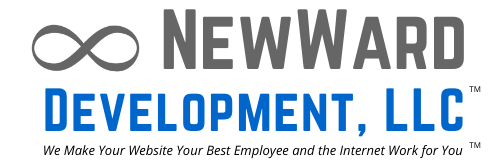In the competitive digital landscape, converting visitors into customers is a top priority for businesses. Conversion Rate Optimization (CRO) is the process of increasing the percentage of website visitors who complete a desired action, such as making a purchase, filling out a form, or subscribing to a newsletter. This guide will provide you with comprehensive insights and actionable strategies to enhance your website’s conversion rate.
What is Conversion Rate Optimization?
Conversion Rate Optimization involves using data and feedback to improve the performance of your website. The goal is to understand how users interact with your site and identify barriers that prevent them from completing desired actions. By making strategic changes based on this analysis, you can increase the likelihood of conversions.
Why is CRO Important?
Increased Revenue: Higher conversion rates lead to more sales and revenue without increasing traffic.
Better ROI: Improving conversions maximizes the return on your existing traffic and marketing efforts.
Enhanced User Experience: CRO focuses on understanding and improving the user experience, leading to greater satisfaction and loyalty.
Key Metrics to Track
To effectively optimize your conversion rate, it’s essential to track relevant metrics. Some key metrics include:
Conversion Rate: The percentage of visitors who complete a desired action.
Bounce Rate: The percentage of visitors who leave your site after viewing only one page.
Average Session Duration: The average time visitors spend on your site.
Exit Rate: The percentage of visitors who leave your site from a specific page.
Steps to Effective Conversion Rate Optimization
Analyze Current Performance: Start by analyzing your website’s current performance using tools like Google Analytics. Look at key metrics, identify high-exit pages, and gather insights into user behavior. This analysis will help you pinpoint areas for improvement.
Set Clear Goals: Define specific, measurable goals for your CRO efforts. These could include increasing the conversion rate on your checkout page, reducing the bounce rate on your landing pages, or increasing the number of newsletter sign-ups.
Understand Your Audience: Gain a deep understanding of your target audience’s needs, preferences, and pain points. Use surveys, user feedback, and persona development to create a detailed picture of your ideal customer. This information will guide your optimization efforts.
Optimize Landing Pages: Your landing pages are crucial in converting visitors. Focus on creating compelling, relevant, and user-friendly landing pages by:
Crafting Clear Headlines: Use concise, attention-grabbing headlines that convey your value proposition.
Using Strong CTAs: Ensure your calls-to-action (CTAs) are prominent, persuasive, and easy to understand.
Simplifying Forms: Keep forms short and ask for only essential information to reduce friction.
Adding Social Proof: To build credibility, include testimonials, reviews, and trust badges.
Improve Website Speed: Website speed is a critical factor in user experience and conversion rates. Slow-loading pages can frustrate visitors and lead to higher bounce rates. Use tools like Google PageSpeed Insights to identify areas for improvement and optimize your site for faster loading times.
Enhance Mobile Experience: With a significant portion of web traffic coming from mobile devices, ensuring your website is mobile-friendly is essential. Optimize your site’s design, navigation, and functionality for mobile users to provide a seamless experience across all devices.
Conduct A/B Testing: A/B testing involves comparing two versions of a webpage to determine which one performs better. Test different elements such as headlines, images, CTAs, and layouts to see what resonates most with your audience. Use tools like Optimizely, VWO, or Google Optimize to run A/B tests and analyze results.
Personalize User Experience: Personalization can significantly impact conversion rates by delivering relevant content and offers to individual users. Use data such as browsing behavior, location, and past interactions to create personalized experiences.
Leverage Social Proof: Social proof, such as customer reviews, testimonials, and case studies, can build trust and influence purchasing decisions. Highlight positive feedback and success stories on your website to reassure potential customers and encourage conversions.
Optimize for SEO: Search engine optimization (SEO) and CRO go hand in hand. By optimizing your website for search engines, you attract more qualified traffic that is likely to convert. Focus on keyword research, on-page SEO, and creating high-quality content that meets the needs of your target audience.
Common CRO Mistakes to Avoid
Ignoring Mobile Users
Neglecting mobile optimization can lead to a poor user experience and lower conversion rates. Ensure your site is responsive and performs well on all devices.
Not Testing Changes
Making changes without testing can result in unintended consequences. Always conduct A/B tests to validate your assumptions and make data-driven decisions.
Overlooking User Feedback
User feedback provides valuable insights into pain points and areas for improvement. Solicit feedback regularly and use it to inform your optimization efforts.
Focusing Solely on Traffic
Increasing traffic is important, but it’s not the only factor in improving conversions. Focus on optimizing the user experience and removing barriers to conversion.
Book a Free 30 min Consultation
Conversion Rate Optimization is an ongoing process that requires continuous analysis, testing, and refinement. By understanding your audience, optimizing your website, and leveraging data-driven insights, you can significantly improve your conversion rates and achieve your business goals.
Implement these strategies to create a seamless user experience, build trust with your audience, and ultimately drive more conversions. Remember, even small changes can make a big difference in your overall performance, so stay committed to optimizing and refining your approach.
If you need assistance, contact NewWard Development.

